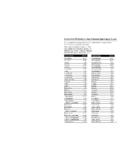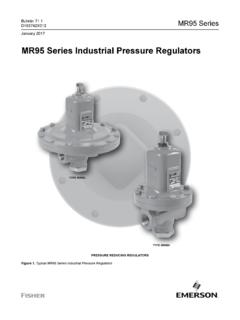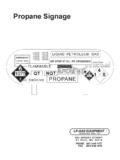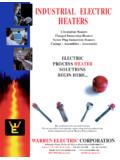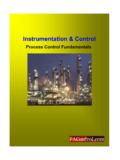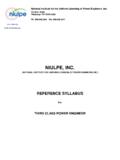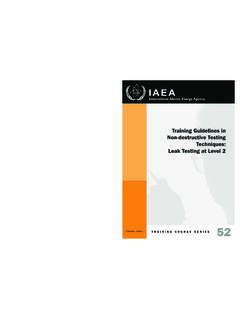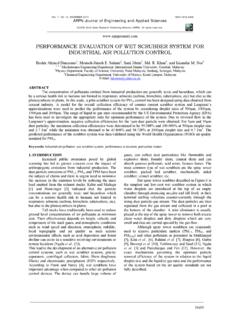Transcription of Condition Sensing Specifications - Rockwell …
1 Technical DataCondition Sensing SpecificationsBulletin Number 808, 836, 836T, 837, 840 Additional ResourcesThese documents contain additional information concerning related products from Rockwell can view or download publications at To order paper copies of technical documentation, contact your local Allen-Bradley distributor or Rockwell automation sales picPa geBulletin 840 Automatic Float Switches3 Bulletin 836 Pressure Controls5 Bulletin 836T Pressure Controls11 Bulletin 808 Speed Switches25 Bulletin 837 Temperature Controllers30 ResourceDescriptionIndustrial automation Wiring and Grounding Guidelines, publication general guidelines for installing a Rockwell automation industrial Certifications website, declarations of conformity, certificates.
2 And other certification automation Publication -836-TD001A-EN-PSpecificationsBulletin 840 Automatic Float SwitchesTechnical DataTechnical TermsTank Operation When the liquid in a tank reaches a preset lowlevel, the float switch will start a pump to begin filling the the liquid level reaches a preset high level, the float switch willstop the Operation Liquid is being collected in a sump. When theliquid reaches a preset high level, the float switch will start a pumpto empty the sump. When the liquid reaches a preset low level, thefloat switch will stop the Force Contact force required to trip the float depends on the type of switch, liquid, float, and floatoperator Waves or agitation in the liquid.
3 Excessive turbulencemay cause improper switch operation for example, earlyswitching or switching between operating Force supporting the float equal in magnitude to theweight of the displaced of OperationBulletin 840 Float Switches provide automatic control for motorsthat pump liquids from a sump or into a tank. The switch must beinstalled above the tank or sump, and the float must be in the liquidfor the float switch to operate. Tank Operation:A float operatorassembly is attached to the float switch by a rod, chain or float switch is actuated based on the location of the float in theliquid.
4 The float switch contacts are open when the float forces theoperating lever to the UP position. As the liquid level falls, the floatand operating lever move downward. When the float reaches apreset low level, the float switch contacts close, activating thecircuit and starting the motor. The contacts can directly activate amotor or provide input for a logic system to fill the tank. As theliquid level rises, the float and operating lever move upward. Whenthe float reaches a preset high level, the float switch contacts open,deactivating the circuit and stopping the motor.
5 Sump Operation:Sump operation is opposite tank 1 Tank and Sump OperationTank OperationSump OperationMotor StopMotor StopMotor StartMotor StartLiquid LevelChangeLiquid LevelChangeTemperature Range (Switch)The temperature range for the switch mechanism at +32 F (0 C) orbelow is based on the absence of freezing moisture, water, or otherfluids that may solidify and impede the operation of the ratings are as follows:Operating: +150 F ( +66 C)Storage: +200 F ( +93 C)Temperature Range (Float)The temperature range for the float mechanism at +32 F (0 C) orbelow is based on the absence of freezing moisture, water, or otherfluids that may solidify and impede the operation of the ratings are as follows:Operating and Storage: +200 F ( +93 C)ConversionsBulletin 840 Styles A and BFloat Switches are assembled for tankoperation but can be easily converted to sump operation.
6 Style Aswitches can be changed from tank to sump operation by movingthe float rod to the opposite end of the double arm Bswitches can be converted in either of the following ways: Remove the lever, turn the shaft 90 counterclockwise and replacethe lever in its original position. Remove the lever and replace 180 from the original Dis for tank operation only. Style DSis for sump operationonly. These switches cannot be 840 Float Switches have a snap action mechanism forquick-make and quick-break contact operation. This featureprovides high snap-through forces once the mechanism hastraveled the required distance.
7 See table Contact Rating per PoleAC NEMA A600DC NEMA N300 Max. VAC Make Break Make BreakMax. VDC Make Break120 60 A A 7200V A 720V A 240 30 A A 7200V A 720V A 125 A A480 15 A A 7200V A 720V A 250 A A600 12 A A 7200V A 720V A Maximum Horsepower RatingsStyleSingle-PhaseAC2- or 3-PhaseACDC115V 230V 115V230-460-575V 32V 115V 230VA Tank orSump11 .025 Tank 2 11D 223 Sump 223 Wiring ConfigurationsStyle A (Contact Options) - 1 (Standard)Style BStyles D & DS1L1L2L3L1L2L3T1T2T1T22341234 MotorMotor4 Rockwell automation Publication -836-TD001A-EN-PBulletin 840 Automatic Float SwitchesSpecificationsApproximate DimensionsApproximate Dimensions and Shipping WeightsDimensions in inches (millimeters).
8 Dimensions are not intended tobe used for manufacturing 1 Mounting ( ) ( ) ( ) ( ) ( ) ( ) ( ) ( ) ( ) ( ) ( ) ( ) ( )Dia. A Approximate Shipping Weight 4 lbs ( kg) ( ) ( ) ( ) ( ) ( ) ( )Style B Approximate Shipping Weight 3 lbs ( kg) Approx.(146)Styles D and DS Approximate Shipping Weight 2 lbs ( kg)Type 4 in. Conduit HubDia. Mtg. HolesStyles A and B Approximate Shipping Weight 4 lbs ( kg)5 Rockwell automation Publication -836-TD001A-EN-PSpecificationsBulletin 836 Pressure ControlsTechnical DataTechnical TermsAdjustable operating range Total span within which thecontacts can be adjusted to trip and reset.
9 Trip setting Higher pressure setting at which value the contactstransfer from their normal state to a changed state. Reset setting Lower pressure setting at which value thecontacts return to their normal state. Adjustable differential Difference between the trip and resetvalues. Minimum differential When the differential is set to the lowestpressure difference between trip and reset. Maximum differential When the differential is set to the widestpressure difference between trip and reset. Maximum occasional surge pressure Maximum surge pressurethat can be applied to the actuator.
10 Surges or transients can occurduring startup and shutdown of a machine or system. Expressed inmilliseconds, complex electronic instrumentation is required tomeasure the varying amplitude, frequency, and duration of this waveform. Extreme surges that occur approximately eight times in a 24-hour period are line pressure Maximum sustained pressure that canbe applied to the bellows without permanent damage. The controlshould not be cycled at this pressure. Positive pressure Any pressure more than 0 psi. See Figure 2. Trip setting Increasing pressure setting when contacts changestate.










